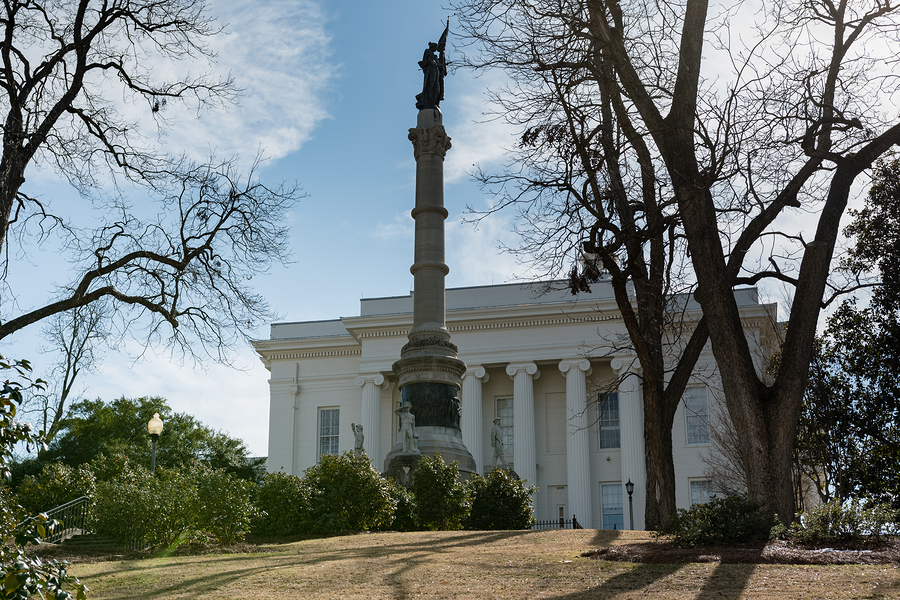 In the past few years there has been a lot of attention paid to monuments and memorials that honor members of the Confederacy who fought in the Civil War.
In the past few years there has been a lot of attention paid to monuments and memorials that honor members of the Confederacy who fought in the Civil War.
The basic argument seems to be:
A. We must honor our country’s history and maintain and preserve these remembrances of times past.
B. The War was fought to ensure the continuance of slavery and, as such, was an abomination.
There are no easy answers, and, certainly, no consensus. Is it healthier to learn from the past, to acknowledge that “the past is prologue” (Shakespeare, The Tempest). Or, is it better to start anew and put the past away?
This quandary is not new. How do we treat memorabilia connected to Nazi’s? What about Stalin, who engineered a famine that killed 3 million Ukrainians? Then there’s the British Empire, which exploited and killed subjects from Ireland to Kenya. British missionaries strongly “encouraged” “heathens” to shed their own religious and spiritual beliefs so that they could enter the kingdom of heaven. Is there a movement to eradicate the memory of Queen Victoria?
One important difference in tributes to the “Old South” is that over 700 memorials were erected in an effort to inhibit the efficacy of equal rights granted to former slaves during Reconstruction. The use of Jim Crow laws in the South successfully erected barriers that ensured that there was no equality between the races. Historically, memorials to various tyrants and hoodlums were meant to honor those who held beliefs embracing questionable values, the tributes to the Confederacy were intended to extend a de facto slavery in the American South.
The sense of violation may soften with time. The Arch of Titus in Rome is a good example. The Arch was constructed in AD82. It celebrates the successful siege of Jerusalem and has become a symbol of the Jewish Diaspora.
At an unknown date, the Rabbinate of Rome decreed that Jews were forbidden to walk under the arch. This ban was lifted in 1948 with the formation of the Jewish state of Israel. The cancellation became public knowledge during Hanukkah in 1997. It is important to remember, however, that the intention of the constructed arch was celebration, not intimidation. It is an important difference.
Statues honoring heroes of the Confederacy like Robert E. Lee and Jefferson Davis can be pulled down and destroyed or moved. But, what is to be done about names of streets such as J Davis Court in Houma, Louisiana; institutions such as Washington & Lee University in Lexington, Virginia (Robert E. Lee was the president of this school); Lee County in Florida & Stonewall County in Texas; Fort Bragg in North Carolina? Is it even possible to change all the names? Should they stand as they are? Is there a compromise somewhere?
There are, world over, museums and shrines that educate about injustices of the past. While some may wish to dismiss the importance of these settings, and some, even deny the occurrence of events (like denying the Holocaust) there does not appear to be the same level of anger directed toward what might be called educational exhibits. Undoubtedly the undeniable proof of harm on display in edifices such as The National Museum of the American Indian, can be hard to argue with.
On a lighter note, a statue dedicated to Vladimir Lenin in Odessa in the Ukraine has been converted into a memorial to Darth Vader. The ability to mock a once intimidating presence is perhaps the most powerful, not to mention satisfying, way to dull the pain.
Alongside physical representations honoring the Confederacy grew the romantic myths of the dominance of the South and the widely touted belief that “the South will rise again”. Cloaked in the language of state’s rights, a denial of the central focus of the war to abolish slavery, continues to hold sway some 153 years after the cessation of the conflict.
As recently as 2015 it was discovered that in a geography textbook in Texas that slaves were described as “immigrants” and “workers”.
It is likely that an enduring belief in values that are, largely, deemed to be corrupt in the present day, is the fuel that ignites the lionization of the defenders of a discredited way of life.
In the 1950’s and 60’s the Confederate flag and related memorabilia were influential in galvanizing white opposition to the Civil Rights Movement. Journalist Robert Sherrill, born in Frogtown, Georgia, advanced the idea of what he called “scrotum sociology”. Sherrill maintained that following the outcome of the Supreme Court decision on “Brown vs. the Board of Education”(1954) that segregated schools were unconstitutional. He claimed that white schoolgirls were at increased risk of being raped by young black men. Many influential white men maintained that desegregation was dangerous. They argued that it was preferable to close schools rather than allow desegregation.
What seems reasonable is that it is important to remember critical periods in history. The direction this is to take is unclear. Yes, plaques can be added to certain monuments that will reveal a more complete and accurate story as to what is being memorialized. The names of institutions may be changed. What, however is to be done with the above-mentioned streets, cities, counties that contain a reminder of the antebellum South? The task appears to be undoable and confusing.
History books can be, and many are, rewritten. Schools can include courses on lessons about integrity and generosity and compassion. It is helpful to acknowledge barbarity in the recent and distant past. If misdeeds are not discussed and recognized, it makes repetition almost inevitable. The worlds of academia, media and the arts are likely to continue to maintain and increase respect for the value of diversity. With integration of customs and ideas based on learning, the propensity toward xenophobia is likely to become diminished.
It is becoming increasingly difficult to preserve myths around historical events. Perhaps concerns about whitewashing history are unnecessary — information is easily disseminated. Conflicting accounts can, rather easily, be verified or rejected.
No consensus will be found on what is true, fair or just. It is most definitely in the eye of the beholder. As a rule, individuals believe what they believe. Those who wish to expand their vision will and those who don’t, won’t.
The challenge appears to be cognizant of the past in a way that will not impede forward movement. Ironically, this dilemma is not, simply, black or white.
- “Why the Fuss Over Confederate Statues?” BBC News, BBC, 17 Aug. 2017, www.bbc.com
- Rohrer, Finio. “When Is It Right to Remove AStatue?” BBC News, BBC, 23 Dec. 2015, www.bbc.com
- Duelholem, Benjamin. “We Don't Erase History By Pulling Statues Down. We Do It By Putting Them Up.” The Washington Post, WP Company, 23 Aug. 2017, www.washingtonpost.com
- Smithers, Gregory D. “Smithers: A Historian's Plea for the Removal of Confederate Statues.” Richmond Times-Dispatch, Richmond Times-Dispatch, 27 July 2015, www.richmond.com
- Smith, Larry. Tough Call: The Rise of Hate and the Debate on Removing Statues. www.tribune242.com
- Mersky, Marcia. “Does Collective Remembrance of a Troubled Past Impede Reconciliation?” International Center for Transitional Justice, 2 May 2016, www.ictj
About the Author

Ruth Gordon
, MA/MSW/LCSWI bring with me +30 years of experience as a clinician. My Masters degrees are from: Assumption College, Worcester, MA, Master of Arts in Psychology & Counseling/ and Boston University School of Social Work, Boston, MA, an MSW in Clinical Social Work. This is the 11th year I have written a monthly newsletter that is sent to approximately 500 individuals. The archive can be found on my website, www.foreverfabulousyou.com.
Office Location:
The OC Building, 11983 Tamiami Trail, N., Naples, FL 34110
Naples, Florida
34110
United States
Phone: 239 293-4314
Contact Ruth Gordon
Professional Website:
www.foreverfabulousyou.com